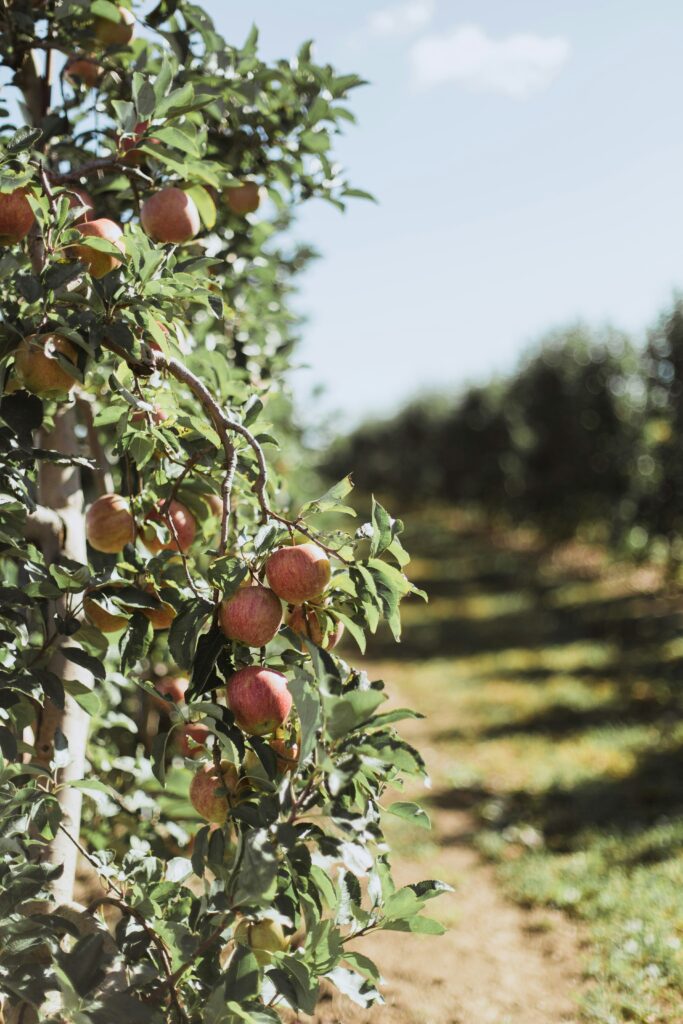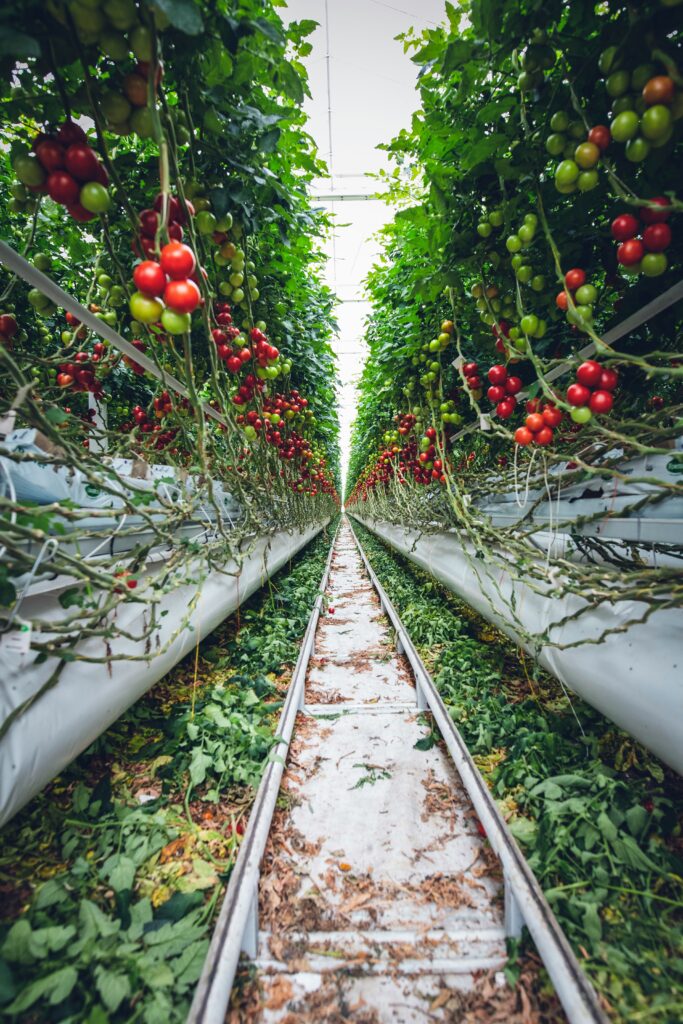Sustainable Agriculture: California Agriculture’s Path to Environmental Resilience
California stands at the forefront of agricultural innovation, producing over 400 different commodities and supplying more than a third of America's vegetables and two-thirds of its fruits and nuts. The state's commitment to sustainable agricultural production has resulted in approximately 2.5 million acres dedicated to organic cultivation, making it a leader in the transition toward environmentally responsible farming practices. This impressive agricultural output comes with significant responsibility for maintaining ecological balance while ensuring economic viability.

The California Climate & Agriculture Network represents a coalition of sustainable and organic farming organizations working to strengthen the resilience of California farms through advocacy and policy development. These efforts align with the state's official policy declaring agriculture a strategic resource necessary for a sustainable food production and delivery system. The integration of innovative practices and technologies has enabled farmers to reduce water usage, decrease carbon emissions, and enhance soil health across the state's diverse growing regions.
Programs like the Office of Agricultural Resilience and Sustainability support farmers in implementing climate-smart agricultural practices that benefit both the environment and their bottom line. These initiatives, combined with research from organizations such as the UC Davis Sustainable Agriculture Research & Education Program, demonstrate how California continues to develop agricultural systems that are economically viable while conserving natural resources and biodiversity for future generations.
Sustainable Agriculture: California Agriculture's Path to Environmental Resilience
Sustainable Agriculture in California Context
California stands at the forefront of sustainable agricultural innovation, balancing productivity with environmental stewardship. The state's diverse climate and rich soils have supported a remarkable agricultural evolution, now facing new challenges from climate change and resource constraints.
History and Evolution of California Farming
California's agricultural journey began with Spanish missionaries who introduced European crops and farming techniques in the late 18th century. By the Gold Rush era in the 1850s, farming expanded rapidly to feed growing populations.
The 20th century saw transformative changes with the Central Valley Project providing irrigation infrastructure that turned arid lands into some of the world's most productive farmland. This period also introduced intensive chemical use and mechanization.
The 1970s marked a turning point as sustainable farming practices gained traction through pioneers like the California Certified Organic Farmers (CCOF). Environmental concerns and worker safety issues drove initial sustainable agriculture movements.
By the 1990s, integrated pest management, water conservation, and soil health practices became more mainstream as farmers recognized long-term benefits.
Current State and Importance
Today, California agriculture produces over 400 commodities and supplies one-third of U.S. vegetables and two-thirds of its fruits and nuts. This $50+ billion industry faces unprecedented challenges including drought, wildfire, and labor shortages.
Sustainable California farming practices now include regenerative methods that improve soil health and carbon sequestration through:
- Diverse crop rotations
- Reduced tillage
- Cover cropping
- Precision irrigation
Land access remains a significant barrier with nearly 45% of California farmland being rented, limiting long-term sustainability investments by farmers.
The agricultural community increasingly adopts AI technology and remote sensing to optimize resource use. These tools help reshape California's farmlands after natural disasters like wildfires.
Climate resilience has become central to the state's agricultural vision, recognizing that sustainable farming practices are essential for future food security.

Climate Change and Its Impact on Agriculture
California agriculture faces unprecedented challenges as our climate continues to shift. Rising temperatures and changing precipitation patterns are already affecting crop yields and water availability across the state's diverse growing regions.
Climate Change Effects on Crop Production
California's agricultural landscape is transforming due to warming temperatures. By 2050, yields are projected to decline by 40 percent for avocados and 20 percent for almonds, table grapes, oranges and walnuts. These dramatic reductions threaten not only farmer livelihoods but also national food security.
Heat-sensitive crops are particularly vulnerable to climate shifts. Many fruit and nut trees require specific “chill hours” during winter months to produce properly, a requirement increasingly difficult to meet in warming conditions.
In response, some California farmers are adapting by growing new varieties resistant to heat or drought. These innovative approaches include testing alternative crops better suited to emerging conditions.
Pest and disease pressure also intensifies with climate change. Warmer winters fail to kill off agricultural pests, leading to increased pesticide use and higher production costs.
Drought and Water Scarcity Challenges
Water scarcity represents the most immediate climate threat to California agriculture. Recurring droughts force difficult decisions about water allocation among competing needs.
Groundwater depletion compounds these challenges. Many farmers have traditionally survived drought by pumping groundwater, but this resource is diminishing rapidly in many agricultural regions.
Several actions could help California's farmers lessen drought impacts, including improved irrigation efficiency and strategic crop selection. Technologies like moisture sensors and drip irrigation significantly reduce water usage while maintaining productivity.
Water markets and pricing reforms might incentivize conservation, though these remain controversial. Some farmers have begun transitioning to less water-intensive crops, recognizing that California agriculture must adapt to the changing climate.
Land fallowing has become increasingly common during severe drought years, with significant economic impacts on rural communities dependent on agricultural employment.
Water Management in Agriculture
Effective water management stands as the cornerstone of California's agricultural sustainability. Water-related challenges have intensified in recent years due to recurring droughts, climate variability, and increasing demand across sectors.
Water Supply and Quality Issues
California's agricultural success depends heavily on irrigation, with approximately 9.6 million acres irrigated annually. The state's water supply faces significant pressures from competing demands and environmental requirements.
Prolonged droughts have drastically reduced surface water allocations to farmers in recent years, forcing difficult decisions about crop selection and land fallowing. Many agricultural regions increasingly rely on groundwater to offset these shortfalls.
Water quality concerns compound these challenges. Agricultural runoff containing fertilizers and pesticides can contaminate both surface and groundwater sources. This contamination affects drinking water supplies in many rural communities.
Overapplication of fertilizers has compromised California's water resources, creating a cycle that impacts both agricultural productivity and community health. Addressing these quality issues requires integrated approaches to nutrient management.
Innovative Irrigation Techniques
Modern irrigation technologies have transformed water use efficiency in California agriculture. Drip irrigation systems deliver water directly to plant roots, reducing evaporation and runoff compared to traditional flood irrigation methods.
Precision agriculture tools like soil moisture sensors and weather-based irrigation controllers enable farmers to apply water only when and where needed. These technologies can reduce water use by 15-30% while maintaining or improving crop yields.
Deficit irrigation strategies deliberately apply less water than crops' full requirements during drought-tolerant growth stages. This approach maximizes water productivity while minimizing yield impacts.
Agricultural water stewardship practices optimize production while supporting environmental benefits. These include tailwater recovery systems that capture and reuse irrigation runoff, further improving on-farm water efficiency.
Groundwater Regulation and Conservation
The Sustainable Groundwater Management Act (SGMA) represents California's most significant water policy shift in decades. Implemented in 2014, it requires local agencies to develop sustainability plans for critically overdrafted basins.
Groundwater overdraft has caused land subsidence, reduced aquifer storage capacity, and dried up wells in many agricultural regions. SGMA aims to bring basins into balance by the 2040s through pumping restrictions and recharge projects.
Managed aquifer recharge has gained traction as a key conservation strategy. During wet periods, excess surface water is directed to designated recharge areas where it can percolate into aquifers for future use.
Cover crops and improved soil health practices increase water infiltration and storage capacity. These approaches enhance groundwater recharge while reducing irrigation requirements, creating a win-win for water conservation and agricultural productivity.

Soil Health and Its Significance
Soil health forms the foundation of sustainable agriculture in California, directly impacting crop productivity, environmental quality, and farm profitability. Healthy soil contains adequate organic matter that enables carbon sequestration and supports resilient farming systems.
Practices Promoting Healthy Soil
California's Healthy Soils Initiative promotes agricultural practices that improve soil organic matter and carbon sequestration. These practices include reduced tillage, which minimizes soil disturbance and preserves soil structure.
Mulching is another effective technique that protects soil from erosion while regulating temperature and moisture. Many California farmers apply mulch to conserve water—a critical resource in the state's Mediterranean climate.
Crop rotation diversifies the soil ecosystem by alternating different plant species, which disrupts pest cycles and balances nutrient uptake. This practice is particularly valuable in California's diverse agricultural landscape.
Innovative farm management techniques also include precision irrigation, which prevents soil salinization and optimizes water usage while maintaining soil health.
The Role of Cover Crops and Composting
Cover crops serve multiple functions in soil health management. They protect bare soil from erosion during non-growing seasons, particularly important in California's hillside vineyards and orchards.
These plants also:
- Add organic matter to soil
- Fix atmospheric nitrogen (legumes)
- Break up compacted soil layers
- Suppress weeds naturally
- Provide habitat for beneficial insects
Composting applications deliver concentrated organic matter to soil, enhancing its structure and water-holding capacity. California walnut growers have successfully improved soil resilience through composting programs supported by the state's Healthy Soils Program.
The productive soils of California benefit tremendously from compost applications, which introduce diverse microorganisms that create soil aggregates and break down organic materials into plant-available nutrients.
When used together, cover crops and compost create synergistic benefits, accelerating the development of soil organic matter and enhancing the soil's capacity to support productive agriculture.

Organic Agriculture and Its Growth
Organic agriculture in California has experienced significant expansion, driven by consumer demand and environmental concerns. This growth has transformed farming practices across the state while creating economic opportunities and challenges for producers.
Organic Farming Practices
Organic agriculture is fundamentally defined by growing methods that avoid most synthetic pesticides and fertilizers. These practices emphasize natural ecosystem management through techniques like crop rotation, cover cropping, and biological pest control.
Organic farmers typically maintain soil health through compost application and green manure rather than synthetic fertilizers. This approach supports beneficial soil microorganisms and enhances long-term soil fertility.
Pest management in organic systems relies on prevention through biodiversity, resistant varieties, and beneficial insects. When intervention is necessary, only approved natural substances are permitted.
Water conservation techniques are particularly important in California's drought-prone climate. Many organic farms implement efficient irrigation systems and drought-tolerant crop selection strategies.
Biodiversity support is another hallmark of organic farming, with practices designed to maintain native plant communities and wildlife habitats alongside productive agricultural lands.
Economics of Transitioning to Organic
The economic impact of organic agriculture in California is substantial, with organic food generating $9.9 billion in farm-gate value and $61.7 billion in sales, representing 6% of all US food sales. This premium market creates financial incentives for farmers considering transition.
Transitioning to organic production requires a significant initial investment. Farmers must undergo a three-year conversion period before receiving certification, during which they follow organic practices but typically cannot command organic prices.
Labor costs often increase in organic systems due to more intensive management requirements and mechanical weed control rather than herbicide application. However, input costs for synthetic chemicals decrease substantially.
California's organic farm numbers and acreage have shown consistent growth since the implementation of the state's organic program. This expansion reflects both consumer demand and farmer interest in sustainable practices.
Market access and premium prices remain critical factors in the economic viability of organic production. Direct-to-consumer sales channels provide important revenue streams for many organic producers.

Biodiversity in Sustainable Farming Systems
California's agricultural systems benefit significantly from biodiversity integration. Diverse farming ecosystems support multiple ecological functions while enhancing productivity and resilience against climate challenges.
Biodiversity Conservation Methods
Integrating biodiversity protection into California's agricultural practices serves both environmental and economic goals. Farmers increasingly employ cover cropping techniques to maintain living roots in soil year-round, supporting diverse microorganisms and preventing erosion.
Field margin management creates vital habitat corridors for beneficial insects and wildlife. These borders, planted with native flowering species, provide refuge for pollinators and natural predators.
Regenerative agriculture practices enhance biodiversity while improving overall farm resilience. Techniques include minimizing soil disturbance, maintaining soil cover, and introducing livestock in rotational systems.
Crop rotation and polyculture planting break pest cycles naturally while creating diverse above-ground habitats. These methods significantly reduce the need for synthetic interventions while building soil health.
Pest Control and Ecosystem Services
Biodiverse farming systems naturally regulate pest populations through predator-prey relationships. Beneficial insects like ladybugs, lacewings, and parasitic wasps provide free pest management services when properly supported.
Soil biodiversity forms the foundation of sustainable pest management strategies. Healthy soils containing diverse microorganisms naturally suppress many plant pathogens and support stronger crops with enhanced natural resistance.
Habitat diversity creates multiple ecological niches that prevent any single pest from dominating. Strategic plantings of companion crops can repel specific pests or attract beneficial insects.
California farms implementing these biodiversity-focused approaches report reduced pesticide costs and improved crop quality. Research indicates that maintaining at least 20% natural habitat within agricultural landscapes maximizes these ecosystem services while supporting sustainable food production.
Centrality of the Central Valley
California's Central Valley stands as one of the most productive agricultural regions in the United States. This vast stretch of fertile land provides over one-quarter of the food consumed across the country, making it a cornerstone of national food security.
The region's agricultural production dominates California's farming economy. Spanning approximately 450 miles through the center of the state, the Central Valley contains some of the world's most productive soil, supporting a diverse range of crops and agricultural systems.
For local communities, the agriculture industry represents both economic opportunity and environmental challenges. The Valley's farming operations employ hundreds of thousands of workers while generating billions in annual revenue.
Key Agricultural Contributions:
- Produces over 250 different crops
- Supplies majority of America's fruits, nuts, and vegetables
- Generates more than $17 billion in agricultural export value annually
The sustainable development of Central Valley agriculture faces significant hurdles. Water scarcity, soil health, and climate change threaten long-term productivity, pushing farmers to adopt innovative approaches.
Regenerative agriculture practices offer promising solutions for Central Valley farmers. These techniques focus on soil health as a foundation for both productivity and environmental stewardship.
Emerging programs support beginning BIPOC farmers with training spaces and resources to establish sustainable operations. Such initiatives help diversify agricultural leadership while promoting environmentally sound farming methods.
The USDA encourages Central Valley producers to implement conservation measures through various assistance programs. These include support for micro-irrigation systems, lined reservoirs, and improved nutrient management.

Future of Agriculture in California
California agriculture faces transformative challenges from climate change, labor shortages, and evolving technologies. Adaptation strategies, innovative policies, and educational initiatives will shape the sustainability and productivity of the state's vital agricultural sector in coming years.
Innovations and Technology in Agriculture
Precision agriculture technologies are revolutionizing California farming operations. Drones, soil sensors, and AI-driven data analytics now enable farmers to apply water and nutrients with unprecedented efficiency, reducing waste while maintaining productivity.
Smart irrigation systems have become essential as water scarcity intensifies. These systems adjust watering schedules based on real-time data about soil moisture, weather forecasts, and crop needs, cutting water usage by up to 30% compared to conventional methods.
Robotics and automation address the labor availability challenges facing California agriculture. Autonomous harvesters and pruning robots are being deployed especially in specialty crop production, where the state leads nationally. These technologies not only offset worker shortages but also improve harvest timing precision.
Indoor farming and controlled environment agriculture represent another frontier, allowing year-round production with minimal pesticide use and water consumption—particularly valuable in California's climate-vulnerable regions.
Policies Supporting Sustainable Practices
California leads the nation in agricultural sustainability legislation. The Healthy Soils Initiative provides financial incentives to farmers implementing carbon sequestration practices, recognizing agriculture's dual role in climate mitigation and adaptation.
Water policy reforms have become increasingly critical for the San Joaquin Valley, which produces more than half of California's agricultural output. The Sustainable Groundwater Management Act requires local agencies to develop management plans that will significantly reshape water allocation for agriculture.
State programs now incentivize renewable energy integration on farms. Solar arrays, biomass processing, and methane capture from dairy operations help reduce the sector's carbon footprint while providing alternative revenue streams for farmers.
Conservation easements and farmland preservation policies have gained traction as development pressure threatens agricultural lands. These measures ensure young and beginning farmers can access land to secure the future of food production.
Educational Initiatives and Resources
University of California Cooperative Extension services provide crucial knowledge transfer between researchers and farmers. Their field trials and demonstration projects help validate new agricultural practices under real-world conditions before wider adoption.
Specialized training programs focused on sustainable agriculture techniques have expanded throughout the state. These include certification courses in organic production methods, water conservation strategies, and integrated pest management that reduce chemical inputs.
The California Department of Food and Agriculture partners with the National Institute of Food and Agriculture to fund research and education programs. These collaborations focus on climate-smart agriculture practices that will be critical for cultivating climate resilience in California's agricultural systems.
Online learning platforms have democratized access to agricultural education. Webinars, virtual field days, and digital resource libraries allow farmers to learn about sustainable agricultural production from anywhere in the state, bridging urban-rural divides in knowledge sharing.







